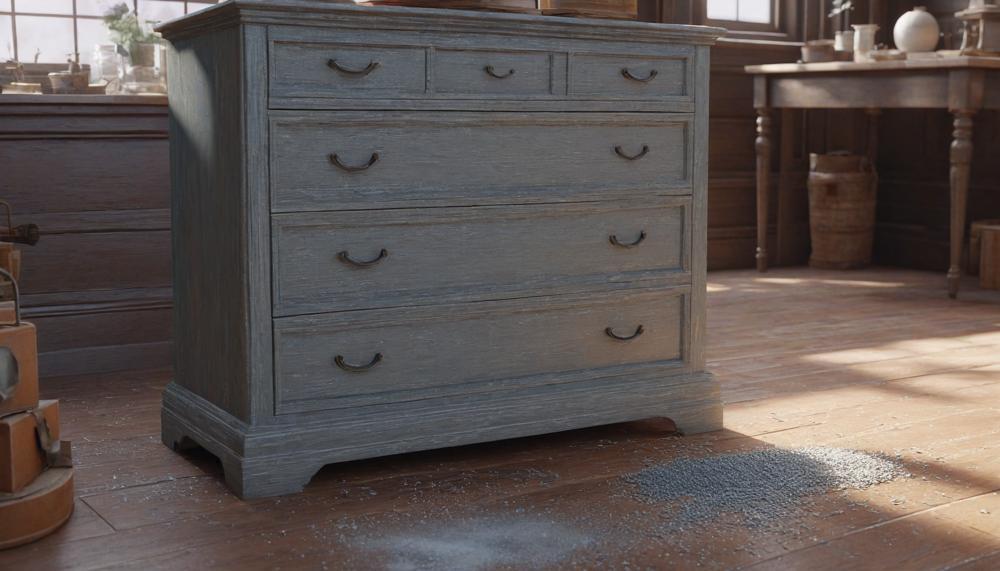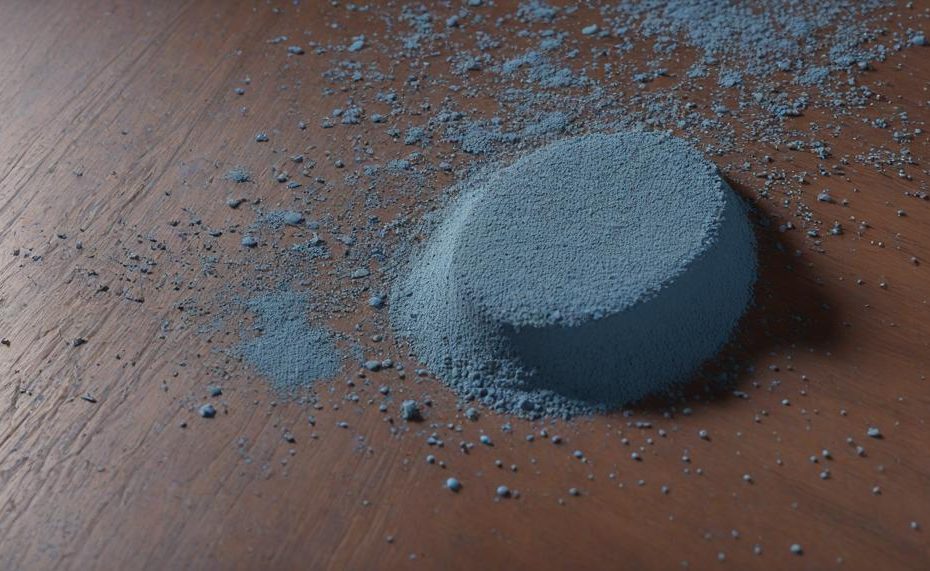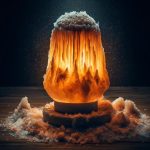Yes. Sanding lead paint can pose serious health risks due to the release of toxic lead dust into the air, which can be easily inhaled or ingested. This exposure is particularly harmful to children and pregnant women but poses a risk to everyone.
When lead paint is disturbed, microscopic lead particles are released, which can cause significant health problems. Understanding the risks and knowing how to respond if you’ve accidentally sanded lead paint is crucial for maintaining safety.
Contents
- 1 How to Test for Lead Paint
- 2 Is Lead Paint Dangerous?
- 3 Can You Paint Over Existing Lead Paint?
- 4 The Dos and Don’ts of Painting Over Lead Paint: Steps To Follow
- 5 Do you have lead paint in your home?
- 6 How to Choose a Good Lead Testing Lab
- 7 Why Homeowners and Businesses Should Test for Lead In Soil
- 8 Lead in Water: Causes, Effects, and How to Test
- 9 Can You Paint Over Existing Lead Paint?
- 10 Conclusion
Key Takeaways:
- Health Risks:
- Lead exposure can lead to severe health issues, including neurological damage, especially in children.
- Pregnant women exposed to lead can suffer from complications and risk harming their unborn child.
- Immediate Actions:
- Do not panic. Immediate, calm action is necessary.
- Isolate the area to prevent further contamination.
- Contact professionals for proper assessment and clean-up.
- Preventive Measures:
- Always wear protective gear: gloves, goggles, and masks.
- Use wet sanding techniques to minimize dust production.
- Properly dispose of all contaminated materials to avoid spreading lead particles.
Recognizing the dangers of lead paint and knowing how to handle an accidental sanding can prevent potential health hazards. Awareness and prompt action are your best defenses against the dangers of lead exposure.
How to Test for Lead Paint
When checking for lead paint in your home, several methods stand out for their accuracy and practicality.
Paint Chip Analysis
- Description: Considered the gold standard, this method involves sending samples of paint chips, including all layers, to a lab.
- Accuracy: Highly accurate.
- Cost: Low for a few samples.
- Process: Collect samples carefully to avoid substrate contamination.
Sodium Sulfide Swabs
- Description: Suitable for light-colored paints, these swabs change color if lead is present.
- Usage: Easy for quick on-site testing.
- Limitations: Less effective on dark or red/pink paints.
Sodium Rhodizonate Swabs
- Description: Ideal for darker paints except red and pink hues. They react to lead by changing color.
- Usage: Quick and simple application.
- Limitations: Not suitable for red/pink surfaces.
Atomic Absorption Spectrometry (AAS)
- Types: Includes Flame Atomic Absorption Spectrometry (FAAS) and Electrothermal/Graphite Furnace AAS (ETAAS/GFAAS).
- Accuracy: Very high.
- Usage: Requires professional equipment and expertise.
- Applications: Ideal for detailed analysis in a controlled environment.
Inductively-Coupled Plasma Atomic Emission Spectrometry (ICP-AES)
- Description: Advanced method used in laboratories to detect lead with high precision.
- Accuracy: Extremely accurate.
- Usage: Requires specialized equipment and professional handling.
Professional Inspection
- Description: Hiring certified professionals ensures thorough and accurate testing.
- Why It’s Effective: Professionals use reliable methods and provide detailed reports.
- Recommendation: Essential for comprehensive safety assessments.
Is Lead Paint Dangerous?
Sanding lead paint can release toxic lead dust and particles into the air, posing significant health risks. This dust can be inhaled or settle on surfaces, leading to ingestion. Here’s a breakdown of the dangers:

| Health Risks | Description | Preventive Measures |
| Lead Poisoning | Inhaling or ingesting lead dust can cause lead poisoning, affecting multiple body systems. Symptoms include headaches, stomach pain, and anaemia. | Avoid sanding lead paint; use protective equipment and proper cleanup if exposed. |
| Neurological Damage | Lead exposure can severely impact the brain and nervous system, especially in children, leading to cognitive impairments, developmental delays, and behavioural issues. | Keep children and pregnant women away from areas with lead paint. Use a certified professional for removal. |
| Respiratory Issues | Lead dust inhalation can cause respiratory problems, including chronic cough, difficulty breathing, and decreased lung function. | Utilize HEPA filters and proper ventilation during any renovation work involving lead paint. |
| Contamination of Home Environment | Lead dust can settle on surfaces and belongings, creating long-term exposure risks. | Implement thorough cleaning methods, using damp cloths and vacuuming with HEPA filters after exposure. |
To mitigate these dangers, always hire professionals for lead paint removal and follow safety guidelines rigorously.
Can You Paint Over Existing Lead Paint?
Yes, you can paint over existing lead paint, but it must be done with caution to ensure safety.
| Step | Action | Details |
| 1 | Preparation | Clean the surface to remove any dust or debris. Ensure the area is well-ventilated and use protective gear. |
| 2 | Primer | Apply a high-quality, lead-specific primer. This seals the lead paint and prevents it from chipping or releasing dust. |
| 3 | Topcoat | Use a durable, high-coverage topcoat designed for encapsulating lead paint. This adds a protective layer and ensures longevity. |
| 4 | Safety Measures | Avoid sanding or disturbing the lead paint layer. Regularly inspect for any signs of deterioration. |
Painting over lead paint, known as encapsulation, is often safer and more cost-effective than removal, provided the existing paint is intact and not peeling. Removing lead paint can release harmful lead dust, posing significant health risks, especially to children and pregnant women. Therefore, if the existing lead paint is in good condition, encapsulating it with the right products is a practical solution.
The Dos and Don’ts of Painting Over Lead Paint: Steps To Follow
Necessary Steps to Follow When Painting Over Accidentally Sanded Lead Paint:
Identify Lead Presence:
Get Professional Testing: Confirm the paint contains lead through certified testing to understand the risk level.
Safety Measures:
- Avoid Further Disturbance: Do not scrape, chip, or sand further to prevent lead dust release.
- Contain the Area: Seal off the workspace with plastic sheeting to avoid contamination spread.
Proper Cleaning:
-
Wet Cleaning: Wipe down all surfaces with a damp cloth to capture any lead dust. Use a HEPA vacuum for thorough cleaning.
-
Encapsulation:
- Apply a Lead-Specific Primer: Use an encapsulating primer designed to seal in lead particles effectively.
- Topcoat Application: Paint over with high-quality paint, ensuring even and complete coverage.
Personal Protection:
- Wear Protective Gear: Use gloves, goggles, and a respirator to protect yourself from inhaling or contacting lead particles.
- Dispose of Materials Safely: Dispose of all cleaning materials, protective gear, and any contaminated debris according to local regulations.
Compliance and Disposal:
- Follow Regulations: Comply with EPA guidelines and local regulations regarding lead paint handling and disposal.
- Consult Professionals: If uncertain, hire professionals who are trained in handling lead paint safely.
Do you have lead paint in your home?
To tell if your home contains lead paint, especially if it was built before 1978, consider the following methods:
- Professional Inspection: Hire a certified inspector to conduct a thorough inspection or risk assessment. They use specialized equipment to detect lead and provide detailed recommendations.
- Lead Test Kits: While available for purchase, these kits have varying accuracy. It’s best to use them under the guidance of a professional or confirm results through a certified laboratory.
- Assumption and Precaution: If your home is older and you suspect lead paint, it’s wise to assume it’s present and take precautions.
Potential Risks of Accidentally Sanding Lead Paint
Accidentally sanding lead paint can release toxic lead dust and fumes, posing serious health risks.
| Risk | Description | Precaution |
| Lead Poisoning | Inhalation or ingestion of lead dust can cause severe health problems, including neurological damage, especially in children. | Use protective gear, keep areas well-ventilated, and clean thoroughly after renovations. |
| Environmental Contamination | Lead particles can settle on surfaces and in soil, leading to long-term contamination. | Contain and properly dispose of all lead-contaminated materials. |
| Regulatory Issues | Improper handling of lead paint can result in legal penalties and fines under local regulations. | Follow all regulations and guidelines for lead paint removal and disposal. |
How to Choose a Good Lead Testing Lab
Finding a reliable lead testing lab for home improvement projects is essential to ensure safety and accuracy. Here’s a step-by-step guide to help you select a trustworthy lab:
| Criteria | Details | Why It Matters |
| Certification | NLLAP and EPA certified | Ensures the lab meets national standards |
| Experience | Years of operation and sample handling | Indicates reliability and expertise |
| Services | Dust, soil, paint, water analysis | Comprehensive testing for various materials |
| Turnaround Time | Within a week | Timely results for quick action |
| Reviews | Online feedback and references | Provides insight into lab’s reliability |
| Communication | Clear explanations and transparency | Helps in understanding results and steps |
| Cost | Reasonable pricing with payment options | Ensures affordability without sacrificing quality |
Why Homeowners and Businesses Should Test for Lead In Soil
Ignoring this crucial step can expose individuals to various dangers, particularly affecting children and pregnant women.
Health Risks:
- Neurological Damage:
- Lead poisoning can cause irreversible brain damage, leading to learning disabilities, behavioural issues, and lowered IQ in children.
- Physical Health Issues:
- Chronic exposure can result in anaemia, hypertension, renal impairment, immunotoxicity, and toxicity to the reproductive organs.
- Pregnancy Complications:
- Lead exposure in pregnant women can cause miscarriages, stillbirths, premature births, and developmental issues in newborns.
- Cognitive and Developmental Delays:
- Even low levels of lead exposure can affect cognitive development and delay physical growth in children.
Explanation:
Failing to test for lead in soil, especially after activities like sanding lead paint, can result in the dispersal of lead particles. These particles settle in the soil, becoming a persistent source of exposure. Children playing in contaminated soil can ingest or inhale lead particles, causing significant health issues.
Visual Explanation:
| Health Risk | Description | Impact |
| Neurological Damage | Lead poisoning affecting the brain and nervous system | Learning disabilities, behavioural problems, lowered IQ |
| Physical Health Issues | Long-term exposure to lead affects various body systems | Anaemia, hypertension, kidney damage, reproductive toxicity |
| Pregnancy Complications | Lead exposure during pregnancy | Miscarriages, stillbirths, premature births, developmental issues |
| Cognitive and Developmental Delays | Impact on child development | Delayed physical growth, cognitive impairments |
To ensure safety, it’s essential to conduct soil testing after any disturbance of lead paint. The consequences of neglecting this can be severe, highlighting the importance of proactive measures to prevent lead exposure.
Lead in Water: Causes, Effects, and How to Test
The primary sources of lead in drinking water stem from corroded plumbing materials, particularly in older homes and cities. High acidity or low mineral content in water can exacerbate this corrosion, leading to increased lead levels. The most significant sources include:
- Lead Pipes: Predominantly found in homes built before 1986, these are the major contributors.
- Faucets and Fixtures: Brass or chrome-plated brass faucets and plumbing fixtures with lead solder.
- Solder: Lead solder used in plumbing connections.
Health Effects of Lead in Drinking Water:
Lead exposure is particularly detrimental to children and can occur through various channels, with drinking water being a significant source. The impacts on health are severe and multi-faceted:
- Cognitive Impairments: Lead exposure can cause irreversible brain damage, leading to cognitive delays and learning disabilities.
- Physical Health Issues: It can result in physical health problems such as kidney damage and high blood pressure.
- Pregnancy Complications: For pregnant women, lead exposure can cause complications, including premature birth.
- Developmental Delays: In children, it can slow growth and cause behavioural problems.
Infants consuming formula made with lead-contaminated water are particularly vulnerable, receiving 40% to 60% of their lead exposure from this source.
Testing and Prevention:
Since lead in water is invisible, tasteless, and odourless, testing is essential. Certified laboratories can test water samples for lead, costing between $20 and $100. Contacting local water authorities is a crucial first step in identifying and addressing lead contamination.
Sources for More Information:
| Source | Description | Effect |
| Lead Pipes | Found mainly in older homes and cities, these pipes are the largest contributors to lead in water. | Cognitive impairments, physical health issues |
| Faucets and Fixtures | Brass or chrome-plated faucets and fixtures can leach lead into water. | Kidney damage, high blood pressure |
| Lead Solder | Used in plumbing connections, especially before 1986. | Developmental delays, behavioural problems |
Can You Paint Over Existing Lead Paint?
Yes, it is safe to paint over existing lead paint. This method, known as “encapsulation,” effectively seals the lead paint, preventing it from posing health risks. Here’s how you can do it safely and effectively:
| Step | Description | Precautions |
| Professional Testing | Get professional testing to confirm the presence of lead paint. | Contact a certified inspector or use a reliable lead test kit. |
| Surface Preparation | Clean the surface with a warm, wet towel. | Avoid sanding or scraping to prevent lead dust release. |
| Use Encapsulating Paint | Apply a high-quality, specially formulated encapsulating paint. | Follow manufacturer instructions for the best results. |
| Safety Measures | Wear protective gear, such as gloves and masks. | Dispose of protective gear properly and wash clothes immediately after painting. |
| Disposal | Contact your local waste disposal company for debris disposal. | Ensure all waste is handled according to local regulations. |
Encapsulation is a cost-effective and safer alternative to lead paint removal because it doesn’t disturb the existing paint, thus avoiding the release of toxic particles into the air. By following these steps and taking necessary precautions, you can protect your home and family from the dangers of lead paint.
Conclusion
Accidentally sanding lead paint can unleash significant health risks by releasing toxic lead dust into the air. This exposure can be particularly harmful to children and pregnant women, but everyone is at risk. The dangers of lead poisoning include neurological damage, respiratory issues, and long-term contamination of your home environment.
If you accidentally sand lead paint, immediate action is crucial. First, stop all work to prevent further spread of lead dust. Isolate the area to contain the contamination and avoid further disturbance. Use wet cleaning methods and a HEPA vacuum to safely clean the area. Professional help is often necessary for thorough assessment and cleanup.
Preventive measures are your best defense. Always wear protective gear, including gloves, goggles, and masks, and consider using wet sanding techniques to minimize dust. Proper disposal of contaminated materials is essential to prevent spreading lead particles.
Awareness and prompt action are key to preventing potential health hazards from lead exposure. Regular testing and careful handling can ensure your home remains a safe environment. If you suspect lead paint in your home, consult certified professionals for accurate testing and remediation.





